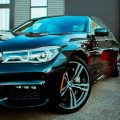Camping adventures often rely on the convenience of power inverters to keep our essential devices running smoothly. However, the proper storage and transportation of these valuable tools are crucial for their longevity and performance. In this step-by-step guide, we’ll walk you through essential practices to ensure your power inverter remains safe and functional, allowing you to focus on enjoying your outdoor experience. Whether you’re a seasoned camper or a beginner, these empathetic tips will help you confidently manage your power needs while creating unforgettable memories in nature.



Gather Necessary Supplies
- Gather a sturdy carrying case that fits your power inverter securely. This will protect the inverter from damage during transport and storage.
- Collect protective padding, such as foam or bubble wrap, to cushion the inverter and prevent it from shifting within the case.
- Assemble any additional cables or accessories that came with your inverter, including power cords, connectors, or adapters, ensuring you have everything ready for use.
- Organize all items neatly within the carrying case to facilitate easy access and prevent loss of components.



Disconnect All Connections
Ensure the power inverter is completely disconnected from all power sources. Remove any batteries or solar panels connected to the inverter by carefully detaching their terminals. Disconnect all devices plugged into the inverter, including any cables or adapters, to prevent potential damage during transport. Store all removed components in a safe location to avoid loss or confusion later.
Clean the Inverter
- Wipe down the power inverter with a dry cloth to remove dust and debris.
- Focus on areas that may accumulate dirt, such as vents and corners.
- Check for any sticky residues or stains and gently scrub if necessary, using a soft cloth.
- Regularly maintaining a clean inverter will help preserve its functionality and enhance its overall appearance.
Use a Protective Case
Choose a protective carrying case specifically designed for electronics that fits your power inverter securely. Ensure the case includes adequate cushioning, such as foam inserts or padded compartments, to absorb shocks from bumps or falls during transport. Place the power inverter inside the case, making sure it is snugly fitted to prevent any movement. Close the case properly, securing any zippers or clasps to protect the inverter from dust and moisture while on the go.
Secure Cables and Accessories
Organize cables and accessories by placing them in separate compartments or pouches within your carrying case. Use labeled pouches for different types of accessories, such as one for charging cables, another for audio cables, and a third for adapters. Secure longer cables with Velcro ties or cable clips to prevent tangling and keep them neatly coiled. Ensure frequently used items, like chargers and USB cables, are easily accessible by storing them in the outer pockets of the case for quick retrieval.
Label Your Equipment
Label each piece of equipment clearly for efficient transport and setup.
- Use durable labels or tags that withstand outdoor conditions.
- Write the name of each component, such as “Inverter,” “Cables,” or “Solar Panels,” on the labels.
- Attach labels to the carrying case and to individual components to avoid confusion.
- Choose a consistent labeling system, such as color coding or numbering, for easy identification.
- Place the labels in visible locations, ensuring they are easy to read at a glance.
- Check that all labels are securely attached before transporting the equipment.
Transport Safely
Keep the power inverter in an upright position while transporting it. Avoid placing heavy items on top of it to prevent damage and ensure proper ventilation. Secure the inverter in your vehicle using straps or bungee cords to minimize movement during travel. Check that it is stable and cannot shift or fall when driving over bumps or sharp turns.
Set Up Properly at Camp
Choose a clean and dry location for the power inverter, ensuring it is free from debris and moisture. Place it on a stable surface, such as a flat rock or a piece of wood, to prevent any tipping or movement. Maintain a safe distance from flammable materials, like campfire fuel or propane tanks, to reduce the risk of fire hazards. Check that the area is well-ventilated to allow for heat dissipation during operation.
Final Tips for Safe Storage
In conclusion, effectively storing and transporting your power inverter is crucial for a smooth and enjoyable camping experience. By adhering to the outlined guidelines, you can safeguard your inverter against potential damage and ensure it remains in optimal condition for reliable power access during your outdoor adventures. Prioritizing the care of your inverter not only extends its lifespan but also enhances your overall camping experience, allowing you to focus on what truly matters—enjoying nature.
Essential Gear Checklist
- Power inverter
- Cleaning cloth or wipes
- Mild cleaning solution
- Protective case or bag
- Cable ties or Velcro straps
- Labels or adhesive labels
- Marker or pen
- Foam padding or bubble wrap
- Storage container
- First aid kit (optional)
- Flashlight (optional)



Maximize Efficiency
- Choose a Protective Case: Invest in a durable, padded case specifically designed for power inverters to prevent damage during transport
- Keep it Dry: Store and transport your inverter in a waterproof bag or case to protect it from moisture and rain
- Secure Loose Cables: Bundle and secure any cables or connectors with Velcro straps or ties to prevent tangling and damage
- Avoid Extreme Temperatures: Store your inverter in a climate-controlled environment, avoiding extreme heat or cold which can affect performance
- Use a Dedicated Storage Spot: Designate a specific area in your camping gear for the inverter to prevent it from being misplaced or damaged by other items
- Disconnect Before Storing: Always disconnect the inverter from any power sources and devices before storing it to prevent accidental short circuits
- Check Battery Levels: If your inverter has a built-in battery, ensure it is properly charged before transport and check levels periodically
- Label Your Equipment: Use labels to identify your power inverter and its accessories; this simplifies setup and prevents mix-ups with other gear
- Avoid Heavy Loads on Top: When packing, do not place heavy items on top of your inverter to prevent crushing or damage
- Regularly Inspect for Wear: Before and after each camping trip, inspect your inverter for any signs of wear or damage, ensuring it’s in good working condition
Essential Tips for Maximizing Your Power Inverter Experience While Camping
- Choose the Right Inverter: Select a power inverter that matches your power needs. Consider the wattage of the devices you plan to use (such as lights, chargers, or small appliances) and ensure the inverter can handle the total load
- Check Compatibility: Ensure that your inverter is compatible with the power source, whether it’s a car battery, deep cycle battery, or solar setup. Most inverters will have specifications for input voltage and current
- Proper Setup: Connect the inverter to your power source following the manufacturer’s instructions. Typically, you’ll attach the inverter’s cables to the battery terminals (positive to positive and negative to negative) securely to avoid any short circuits
- Ventilation: Place the inverter in a well-ventilated area while in use. Inverters can generate heat, and adequate airflow helps prevent overheating and ensures safe operation
- Monitor Usage: Keep an eye on your power consumption. Avoid exceeding the inverter’s wattage limit, and if using multiple devices, prioritize essential items to manage your power usage effectively
- By following these guidelines, beginners can effectively and safely use a power inverter while camping
Essential Insights on Choosing a Power Inverter for Your Camping Adventure
How do I determine the wattage requirements for my camping appliances?
To determine the wattage requirements for your camping appliances, follow these steps:
- Check Appliance Labels: Most camping appliances have a label or specification sheet indicating their wattage. Look for the “W” symbol, which stands for watts.
- Use the Formula: If the wattage isn’t listed, you can calculate it using the formula: [text{Watts} = text{Volts} times text{Amps}]Check the appliance for its voltage (usually 120V for standard outlets) and amperage (A). Multiply these two values to get the wattage.
- Consider Start-Up Watts: Some appliances, especially those with motors (like refrigerators or pumps), may require more power to start than to run continuously. Research the “starting watts” for these appliances and factor this into your calculations.
- Total Wattage Calculation: Add up the wattage of all your appliances to determine the total wattage requirement for your camping set-up. This will help you select an appropriate power source (like generators or batteries).
- Consider Safety Margins: It’s a good idea to include a safety margin of about 20% above your total wattage requirement to ensure your power source can handle any surges or additional devices you may want to power.
By following these steps, you can accurately assess the wattage requirements for your camping appliances and select the appropriate power solution for your trip.
How do I connect a power inverter to my vehicle’s battery?
To connect a power inverter to your vehicle’s battery, follow these steps:
- Choose the Right Inverter: Ensure that the inverter you select matches your power needs and is suitable for your vehicle’s battery capacity.
- Gather Necessary Tools: You will typically need a wrench or pliers, safety goggles, and possibly a multimeter to check voltage.
- Turn Off the Vehicle: Before starting, ensure your vehicle is turned off to prevent any electrical shorts or injuries.
- Identify the Battery Terminals: Locate the positive (+) and negative (-) terminals on your vehicle’s battery.
- Connect the Inverter Cables:
- Positive Connection: Attach the red (positive) cable from the inverter to the positive terminal of the battery. Make sure it is securely connected.
- Negative Connection: Connect the black (negative) cable from the inverter to the negative terminal of the battery.
- Secure Connections: Ensure that the cables are tight and secure to prevent any loose connections, which can lead to sparks.
- Check the Connections: If you have a multimeter, you can check the voltage to ensure the connections are correct.
- Power On the Inverter: Once everything is connected, you can turn on the inverter.
- Use Caution: Always monitor the inverter while in use, and avoid overloading it to prevent damage to the inverter or the vehicle’s battery.
- Disconnect When Not in Use: After using the inverter, it’s a good practice to disconnect it to avoid draining the vehicle’s battery.
Always refer to the manufacturer’s instructions for both the inverter and your vehicle for specific guidelines and safety precautions.






I had an issue with my inverter shutting down unexpectedly during my last trip. I followed the guide but still faced problems. Any troubleshooting tips? Could it be overheating or something else?
Sorry to hear that! Overheating is a common issue, especially in hot weather or when running high-demand devices. Check the vents and make sure it’s not blocked. If it continues, you might want to check the inverter’s manual for specific error codes. Keep us posted!
Great tips! I’ve been using the Renogy 1000W inverter for camping, and I found that keeping it in a cooler area really helps with performance. Sometimes I slip a small fan next to it when it’s running hard. Anyone else doing something like this? Would love to hear your thoughts!
Always keep an extra set of fuses when transporting your inverter! I learned the hard way when I blew a fuse at the campsite and had to drive back to town for a replacement. A little preparation goes a long way!
Great reminder! Fuses can be a lifesaver in the field. It’s also smart to have a multi-tool handy for quick fixes. Anyone else have essential camping gear that’s saved their trip?
I’ve used my inverter for charging everything from my phone to my electric cooler. Having enough power during camping trips really enhances the experience, especially on longer stays. Anyone have tips for optimizing power usage?
Absolutely! It’s all about managing your power draw. Using energy-efficient devices like LED lights and minimizing simultaneous usage can stretch your power. Feel free to share your go-to devices for maximizing power efficiency!
Thanks for sharing your experience! Keeping the inverter cool is definitely key to maintaining its efficiency. A small fan is a great idea—just make sure it’s safe and won’t cause any short circuits! Anyone else have cooling hacks?
I’d suggest using a soft case instead of a hard shell. The hard case is bulky and takes up more space in my Jeep. My portable power station fits snugly in a padded backpack, which I can easily carry on hikes. Just make sure to cushion it well!
That’s a solid tip! Soft cases can definitely save space and be more versatile when transporting. Just remember to keep it protected from heavy impact. Thanks for sharing your packing method!
How about tips on how to connect solar panels to my inverter? I’m thinking about going solar for my next camping trip to reduce gas use. What do you guys think?
Great idea! Connecting solar panels can really extend your power supply. Make sure your inverter is compatible with solar input. You might want to check out portable options like Goal Zero’s Yeti series for a seamless setup. Happy camping!
Any recommendations for a good inverter for small RVs? I’ve been looking at the AIMS 3000W inverter, but not sure if it’s too much or not enough. Thoughts?
The AIMS inverter is a solid choice! It provides plenty of power for small RVs, but make sure to assess your energy needs first. If you have lower power requirements, something like the Energizer 1500W might work better. Just consider how much you plan to run at once!